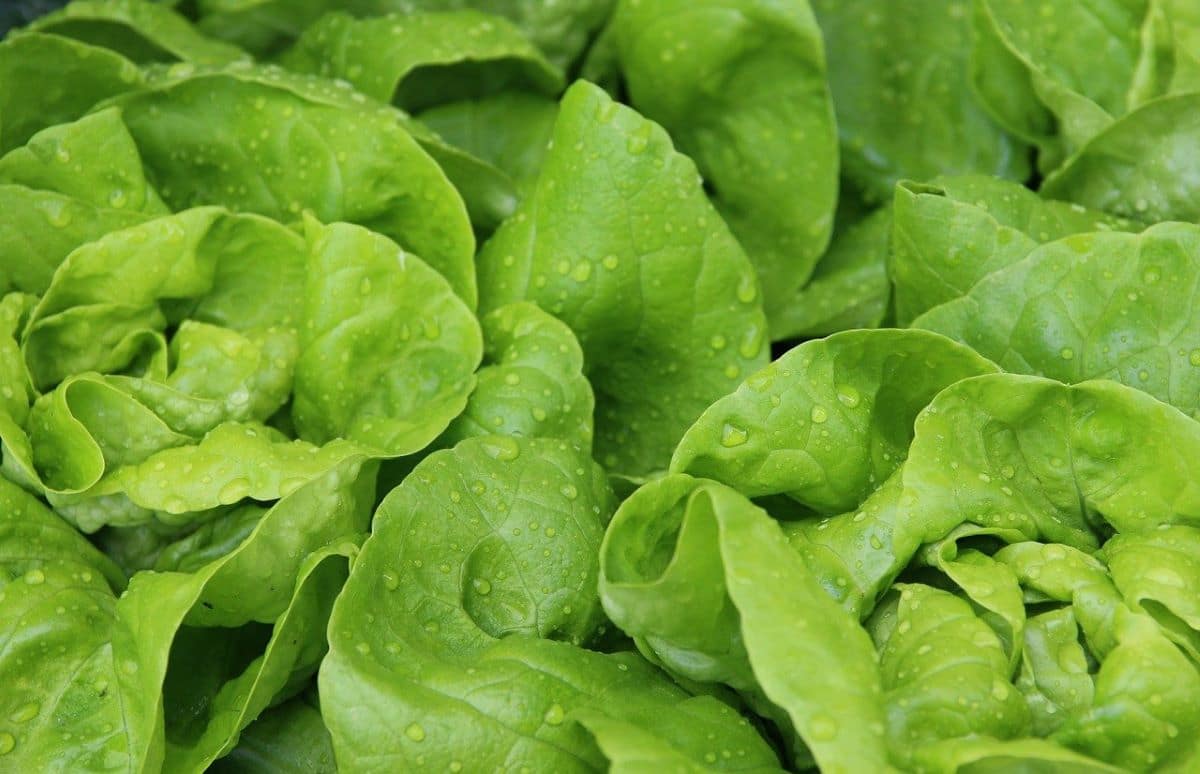
Lettuce is a vegetable that we consume all year round, and it is that It is one of the ones that needs the least time to mature. In fact, in just about three months we will be able to collect it to prepare, for example, delicious salads.
But one of the good things about it is that it can be grown in the garden, as well as in a pot. For this reason, even if you only have a balcony you can enjoy a delicious lettuce without having to buy it in a supermarket.
What is lettuce?
Lettuce, whose scientific name is lactuca sativa, is an herb that, depending on the climate, can be annual (that is, from germination to flowering only a few months pass) or biannual (which lives about two years, dedicating the first to produce leaves, and the second to flower and bear fruit). It is native to the temperate regions of Europe, although today it is cultivated in much of the world, except in cold areas such as the poles.
Its leaves grow into a basal rosette that does not usually exceed 30 centimeters in height. They are normally green in color, but can be brown / reddish depending on the variety. When it reaches maturity, a flower stalk emerges from the center, measuring up to 1 meter high. The flowers are about 10 millimeters long, and produce 6-8 millimeter fruits called achenes.
Types of lettuce
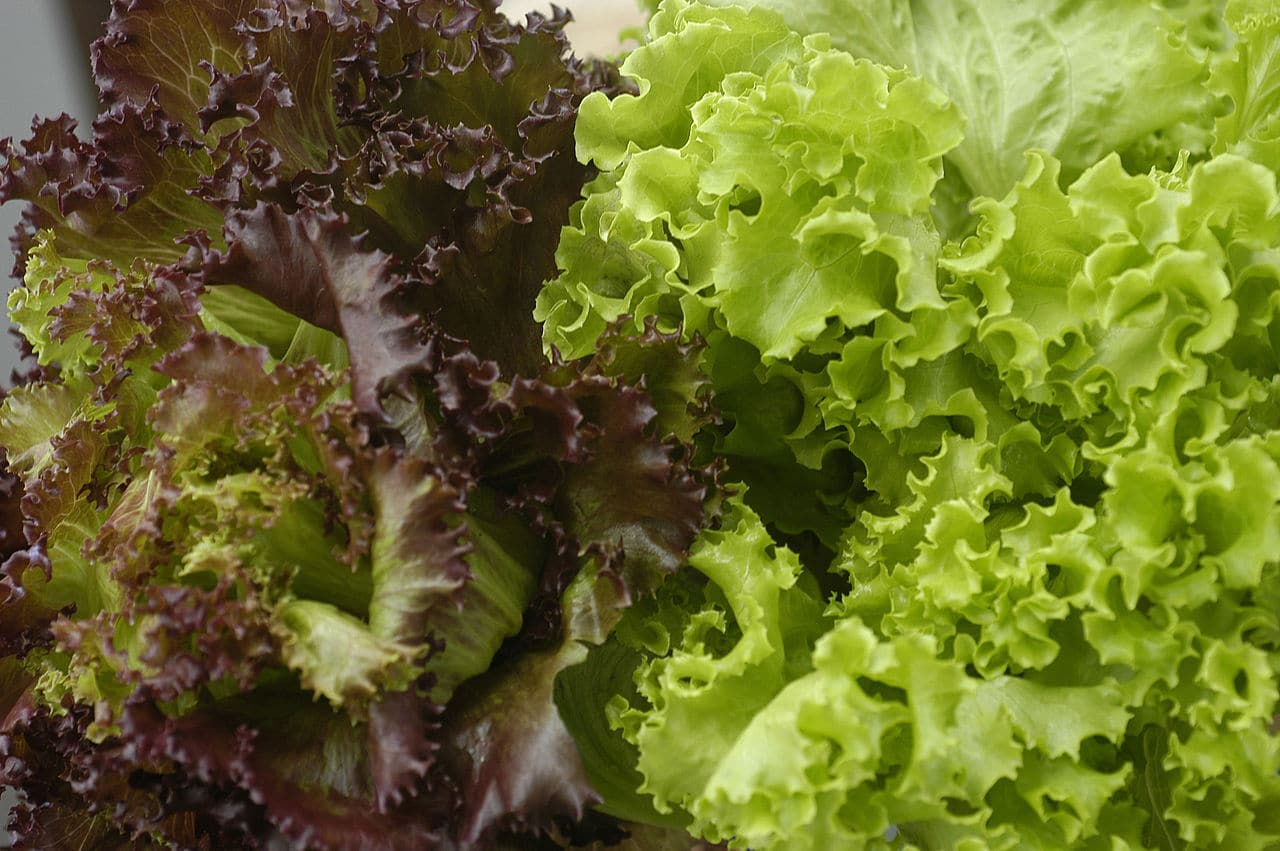
Image - Wikimedia / CostaPPPR
There are many kinds of lettuce, but the ones that are grown the most, by far, are the following:
- Lettuce 'Batavia': forms a rounded rosette, composed of curly leaves.
- Lettuce 'Oak Leaf': It has a certain resemblance to the previous one, but instead of having green leaves, it has green and brown ones.
- Lettuce 'Iceberg': forms a rosette of smooth green leaves, close together. So much so that only the oldest stick out sometimes. See file.
- Lettuce 'Summer Wonder': has smooth, yellowish-green leaves. Sometimes the margins are brown.
- Purple lettuce: it is one that has purple leaves, as its name suggests. Unlike others, its taste is a bit bitter.
- Curly lettuce: it is a type of lettuce with green and very curly leaves.
- Romaine lettuce: has smooth and green leaves, which tend to grow upright.
- Lettuce 'Trocadero': It is similar to the Iceberg, with the difference that it does not form such a tight bud.
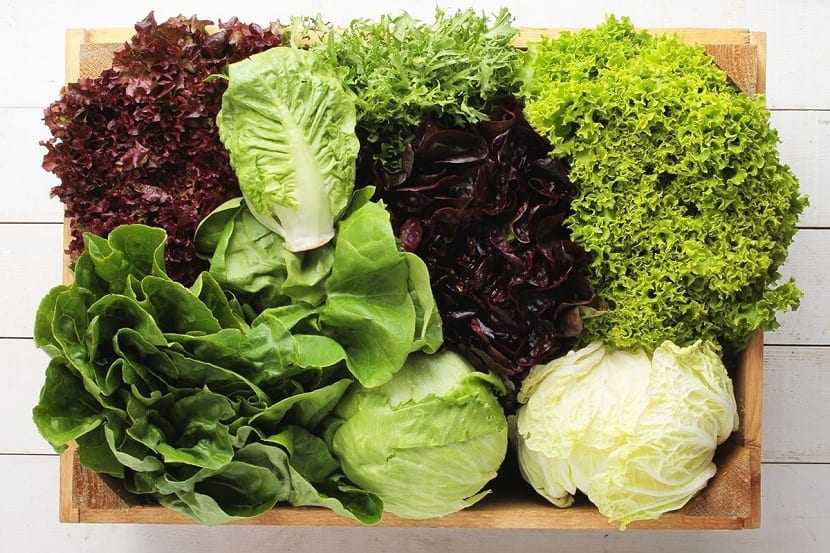
Lettuce cultivation
How is lettuce grown? For everything to go well, we recommend that you take the following into account:
Location
La lactuca sativa is a plant that It must be exposed to the sun directly. And it is that if it were put in shade, the leaves would grow without force, and the bud would not have a good development. Consequently, you would end up with weak lettuce.
But also, you have to think that it has a taproot, but harmless. As it does not grow much, it does not need to develop a root system that is neither very long nor very strong; with which, it is possible to grow it in a pot without any problem.
Earth
- Potted: it is important that it is filled with light substrates, such as substrate for urban garden (for sale here), mulch mixed with 30% perlite, or universal substrate.
- In the garden- Lettuce requires fertile, well-drained soil, otherwise it would have a hard time growing.
Irrigation
It has to be watered frequently, but avoiding excesses. In general, if it is grown in summer, it will be watered about 3-4 times a week, depending on the temperatures and whether it rains or not. And the fact is that the hotter it is, the faster the soil will dry out, especially if it is in a pot.
In the case that it is grown in other seasons of the year, it will be watered less but always bearing in mind that waterlogging should be avoided.
Subscriber
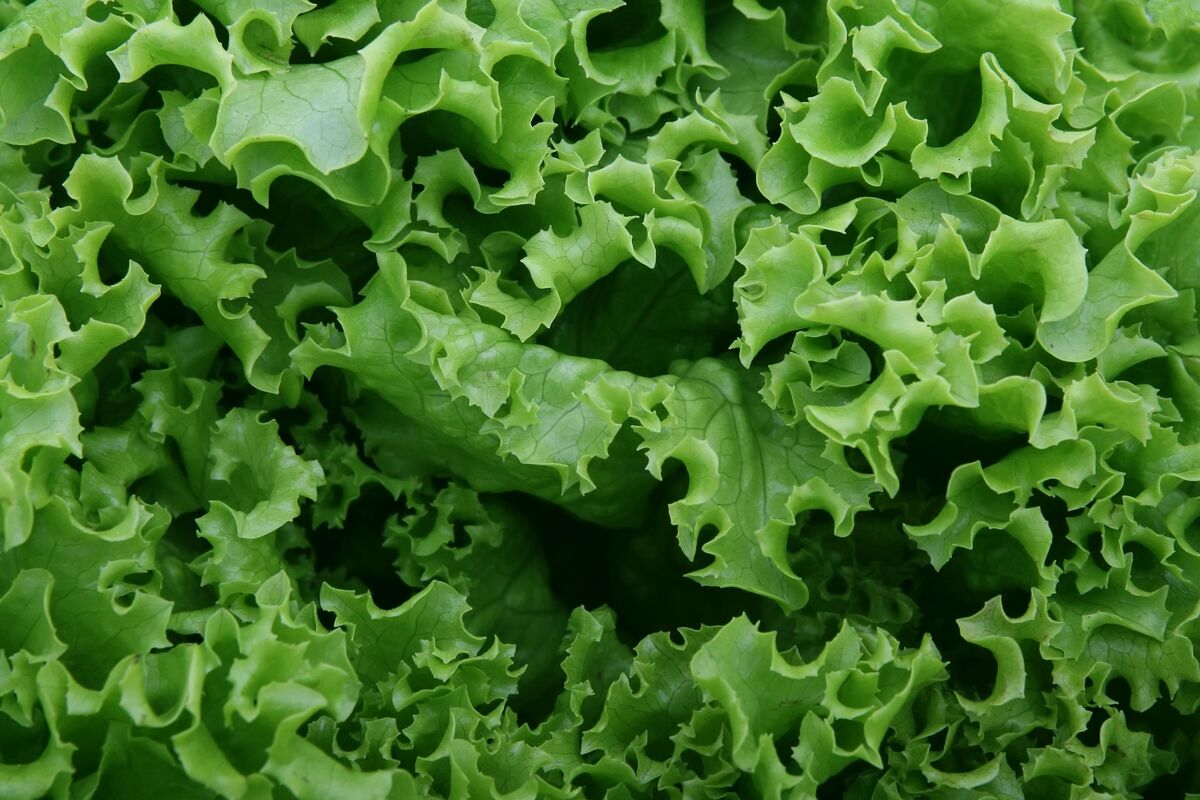
Since lettuce is an edible plant it is preferable to fertilize it with natural fertilizers and not with chemical fertilizers. But if we have it in a pot, it is better to use liquid fertilizers since this way it will absorb the nutrients faster.
As examples of good fertilizers for our plant we highlight guano and algae extract (for sale here), both for their great nutritional richness and rapid efficacy. But yes, the latter should only be used from time to time, as it is very alkaline. For example, you can pay one month with one, and the next month with the other.
Multiplication
Multiplies by seeds, normally in spring but it is possible in summer too, and even in autumn if you have a greenhouse. Just remember that it takes about three months for its leaves to mature and be ready for consumption, and that it cannot stand the cold.
The seeds can be sown in seedling trays (they are ideal for cultivation, since they allow them to be controlled and facilitate subsequent transplantation), pots, planters. Put them separate and in a sunny place. Water from time to time and you will see that they grow well.
Transplant
Transplant it will be done as soon as the roots appear through the drainage holes of the seedbed. If doubts arise, what is done is to press the pot or the seedbed a little with the fingers to detach the soil from it, and then with one hand grasp the plant from under the leaves, and carefully pull it upwards.
If we see that the root ball comes out without falling apart, then it is a good time to plant it in a larger pot or in the ground.
Pests
Lettuce pests are as follows:
- Trips: they are insects similar to earwigs but much smaller. They feed on the sap of the leaves, and can transmit diseases such as the tomato tan virus. More information.
- Miners: they are dipteran larvae that burrow galleries in the leaves.
- White fly: it is a flying insect, white, measuring approximately 0,5 centimeters. It also feeds on the sap of the leaves. More information.
- Aphids: aphids are a pest that we will see on the leaves. They measure about 0,5 centimeters, and are green, yellow or black. More information.
They are fought with ecological insecticides, such as diatomaceous earth, potassium soap (for sale here) or neem oil.
Management
If we talk about diseases, those that can affect you are:
- Anthracnose: it is a fungus that causes the appearance of brown spots on the margins of the leaves.
- Botrytis: it is a fungus that covers the leaves with a whitish powder. More information.
- Mildew: is another fungus that covers the leaves with a kind of grayish powder. More information.
- Sclerotinia: it is a fungus that affects the leaves, causing them to become covered with a kind of white powder.
- Septoria: it is a fungal disease characterized by the appearance of whitish spots with a blackish margin on the leaves.
- Lettuce mosaic virus: it is a virus that affects the leaves. It makes them grow somewhat deformed, lose color and even turn brown.
- Tomato tan virusDespite its name, it infects other plants too, like lettuce. We will see that it has leaves with chlorotic spots, which turn brown with time starting from the margins.
Fungal-borne diseases are treated with copper or sulfur (such as this), which are fungicides. But for viruses there is no treatment.
Harvest
Lettuces they will be ready about three months after sowing. Once they have reached sufficient maturity, the buds are cut and kept in the fridge for about a week. You don't have to keep them any longer as they spoil quickly.
Rusticity
Lettuce bear the coldbut not freezing temperatures.
What uses does it have?
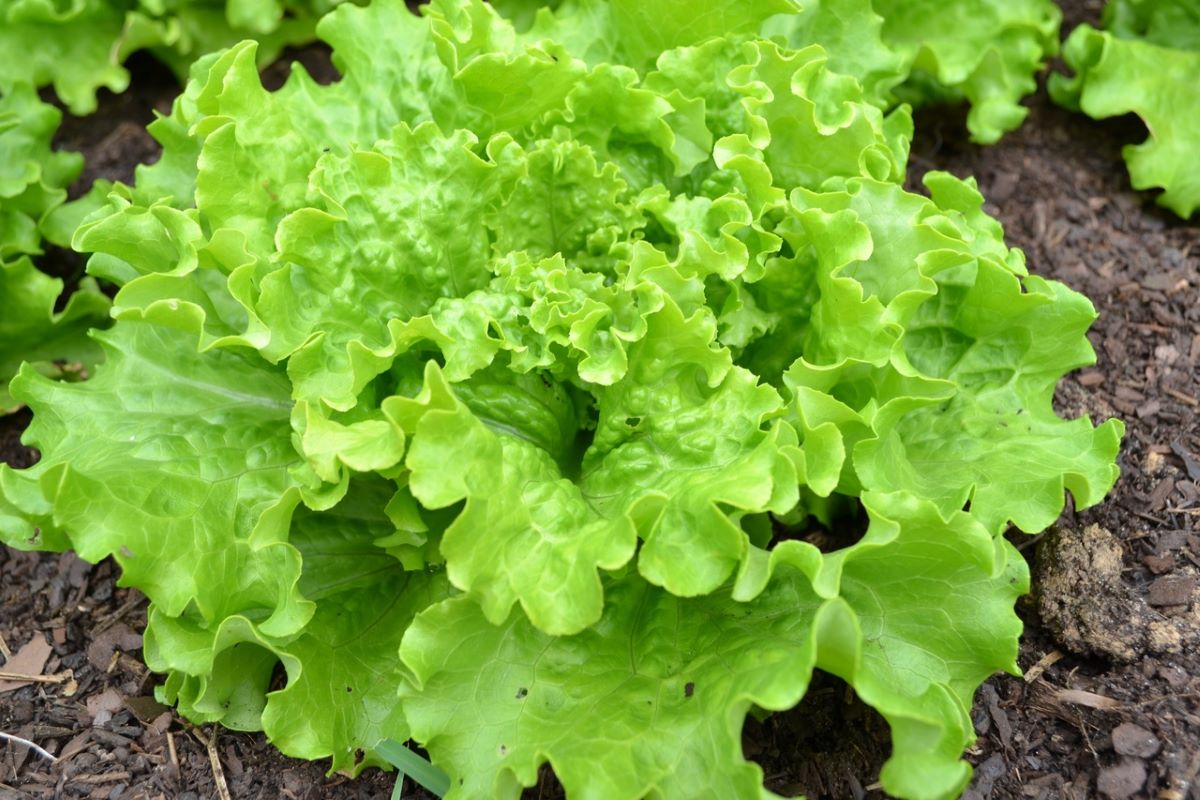
La lactuca sativa is grown for its nutritional value. For example, for every 100 grams it provides us only 13 calories (1% of what is recommended daily), 3,7 milligrams of vitamin C (6% of the recommended amount), or 3312 milligrams of vitamin A ( 110% recommended). As if that were not enough, it contains 95,63 grams of water, and 1,35 grams of protein (2% of the recommended daily amount).
It is common in salads, but we can also find it in hamburgers, pizzas and the like.. You can even prepare a lettuce infusion that will help us sleep better. To do this, we only need about five leaves that we will boil in a saucepan with water. Later, we remove them and we are left with only the resulting liquid. This is what we should drink before going to sleep.
What are the benefits of lettuce?
It has multiple benefits. In fact, it is very interesting to include it in the diet, at any age. For example:
- Helps fight anemiaas it is rich in iron.
- It is used to treat constipation, due to its high fiber content.
- It is rich in various vitamins, such as A, E and C.
- Es very low in caloriesThat is why it is recommended for those who want to lose weight or maintain their weight.
And although it is not a benefit, it is light and fresh. Ideal for preparing lettuce salads, especially on the hottest days of the year, when you want to enjoy light meals.
You really enjoy growing lettuce.